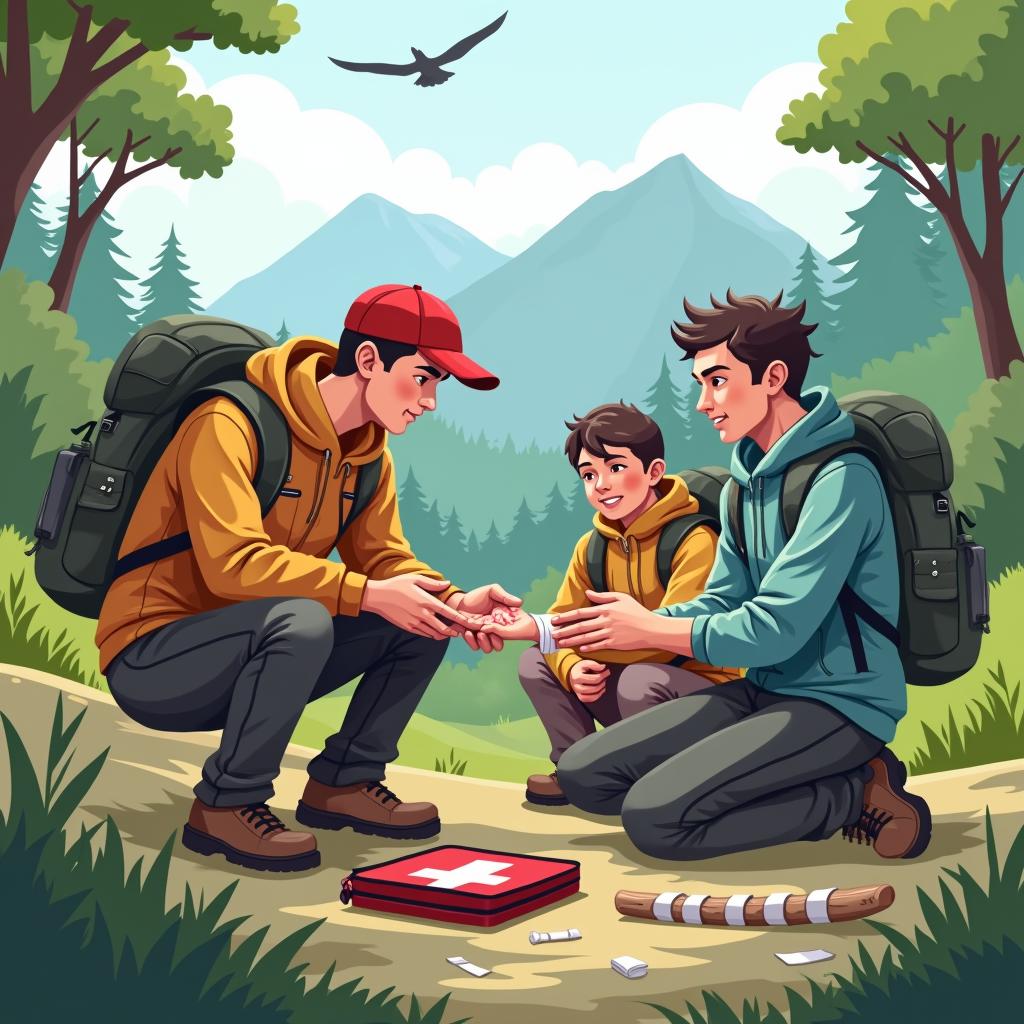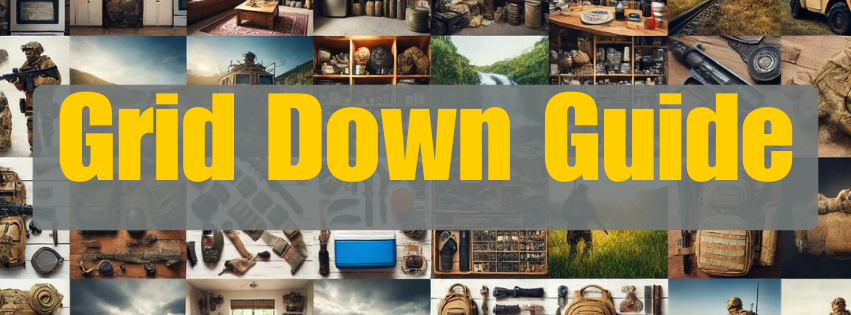
Welcome to the exciting world of wilderness first aid! In this article, we will explore the most important skills that you need to know when faced with an emergency situation in the great outdoors. From treating common injuries like cuts and sprains to handling more serious conditions like hypothermia and allergic reactions, having the necessary knowledge and abilities can make all the difference in a critical moment. So grab your first aid kit and get ready to learn how to be prepared for anything nature throws your way. What are the most important wilderness first aid skills?
Have you ever found yourself in the great outdoors, far away from civilization, when suddenly someone in your group gets injured or falls ill? It’s a scary situation to be in, but with the right knowledge and skills, you can be prepared to handle medical emergencies in the wilderness. In this article, we will explore the most important wilderness first aid skills that you should know to keep yourself and your companions safe in the backcountry. From treating minor cuts and scrapes to dealing with more serious injuries like broken bones and snake bites, we will cover it all. So grab a pen and paper, take some notes, and let’s dive in!
Basic First Aid Principles
Before we delve into specific wilderness first aid skills, let’s start with the basics. Understanding and applying basic first aid principles can make a world of difference when it comes to treating injuries in remote locations. Here are some key principles to keep in mind:
-
Assess the Situation: Before providing any first aid, make sure the scene is safe for both you and the injured person. Look around for any potential hazards that could pose a threat.
-
Check for Responsiveness: Approach the injured person and gently shake their shoulder while asking, “Are you okay?”. If they don’t respond, they may be unconscious.
-
Call for Help: If you have cell service, call 911 or the local emergency number as soon as possible. If you’re in an area without service, designate someone to go for help.
-
ABCs of First Aid: Remember the ABCs of first aid, which stand for Airway, Breathing, and Circulation. Ensure the person’s airway is clear, check for breathing, and monitor their pulse.
By following these basic first aid principles, you can establish a solid foundation for providing effective care in wilderness settings.
Treating Minor Injuries
When you’re out in the wilderness, injuries like cuts, scrapes, and insect bites are common occurrences. Knowing how to treat these minor injuries can prevent them from turning into more serious problems. Here are some wilderness first aid skills for treating minor injuries:
Cleaning and Dressing Wounds
One of the first things you should do when someone gets a cut or scrape in the wilderness is clean and dress the wound to prevent infection. Here’s a step-by-step guide on how to do it:
-
Wash Your Hands: Before touching the wound, wash your hands with soap and water or use hand sanitizer.
-
Clean the Wound: Rinse the wound with clean water to remove any dirt or debris. You can also use an antiseptic wipe if available.
-
Apply Antibiotic Ointment: Apply a thin layer of antibiotic ointment to the wound to help prevent infection.
-
Cover the Wound: Use a sterile bandage or gauze pad to cover the wound and keep it clean.
By following these steps, you can effectively clean and dress minor wounds in the wilderness, reducing the risk of complications.
Handling Insect Bites
Insect bites and stings can be irritating and even dangerous in some cases. Here’s how you can handle insect bites in the wilderness:
-
Remove the Stinger: If the insect leaves a stinger in the skin, remove it by scraping it out with a fingernail or blunt object. Do not squeeze the stinger, as it can release more venom.
-
Apply Cold Compress: To reduce pain and swelling, apply a cold compress to the bite area. You can use a cold pack, ice pack, or wet cloth.
-
Monitor for Allergic Reactions: Keep an eye on the person for signs of an allergic reaction, such as difficulty breathing, swelling of the face or throat, or hives. If an allergic reaction occurs, seek emergency medical help immediately.
By knowing how to clean and dress wounds and handle insect bites, you can effectively manage minor injuries in the wilderness and keep your group safe.
Dealing with Medical Emergencies
While minor injuries are common in the wilderness, more serious medical emergencies can also occur. From broken bones to snake bites, knowing how to handle these situations can be life-saving. Let’s explore some wilderness first aid skills for dealing with medical emergencies:
Treating Broken Bones
In the event of a broken bone in the wilderness, it’s important to immobilize the injured area to prevent further damage and reduce pain. Here’s how you can treat a broken bone:
-
Stabilize the Injury: Support the injured limb with a splint or improvised materials like sticks, bandages, or clothing to prevent movement.
-
Apply Cold Compress: To reduce swelling and relieve pain, apply a cold compress to the injured area.
-
Seek Medical Help: Broken bones should be evaluated by a healthcare professional as soon as possible. If you’re in a remote location, stabilize the injury and make arrangements for evacuation.
By knowing how to stabilize a broken bone and provide initial treatment, you can help the injured person receive proper medical care once they reach a healthcare facility.
Managing Snake Bites
Encountering a venomous snake in the wilderness can be a frightening experience, but knowing how to handle a snake bite can make a difference in the outcome. Here’s what you should do if someone gets bitten by a snake:
-
Stay Calm: Keep the injured person calm to slow the spread of venom in their body. Avoid panicking, as it can increase heart rate and blood flow.
-
Remove Jewelry and Tight Clothing: Remove any jewelry or tight clothing near the bite area, as swelling can occur rapidly.
-
Immobilize the Limb: Encourage the person to stay still and immobilize the bitten limb at or below heart level to slow the spread of venom.
-
Seek Medical Help: Call for emergency medical assistance immediately. Do not try to suck out the venom or apply a tourniquet, as these can do more harm than good.
By staying calm, immobilizing the limb, and seeking prompt medical help, you can help the person recover from a snake bite more effectively.
Wilderness First Aid Kit Essentials
Having a well-stocked wilderness first aid kit is crucial when spending time outdoors. Your kit should contain the essential supplies to treat a variety of injuries and medical emergencies. Here are some items that should be in your wilderness first aid kit:
Bandages and Dressings
- Sterile gauze pads
- Adhesive bandages (various sizes)
- Medical tape
- Elastic bandage (ACE bandage)
Wound Care
- Antiseptic wipes
- Antibiotic ointment
- Hydrocortisone cream (for itch relief)
- Alcohol swabs
Instruments
- Tweezers (for removing splinters or ticks)
- Scissors
- Splint material (SAM splint, sticks, etc.)
- Thermometer (digital)
Medications
- Pain relievers (acetaminophen, ibuprofen)
- Antihistamines (for allergic reactions)
- Epinephrine auto-injector (for severe allergic reactions)
Other Essentials
- CPR mask
- Survival blanket
- Moleskin (for blisters)
- Whistle (for signaling for help)
Having these essential items in your wilderness first aid kit can help you respond effectively to medical emergencies and injuries in the backcountry.
Conclusion
In conclusion, knowing the most important wilderness first aid skills can make a significant difference when treating injuries and medical emergencies in remote locations. From basic first aid principles to treating minor wounds and managing medical emergencies, being prepared and knowledgeable can save lives in the wilderness. Remember to always assess the situation, call for help when needed, and provide care based on the principles of wilderness first aid. By practicing these skills and having a well-stocked first aid kit, you can enjoy your outdoor adventures with peace of mind, knowing that you are prepared to handle any medical situation that may arise. Stay safe, stay informed, and happy trails!
